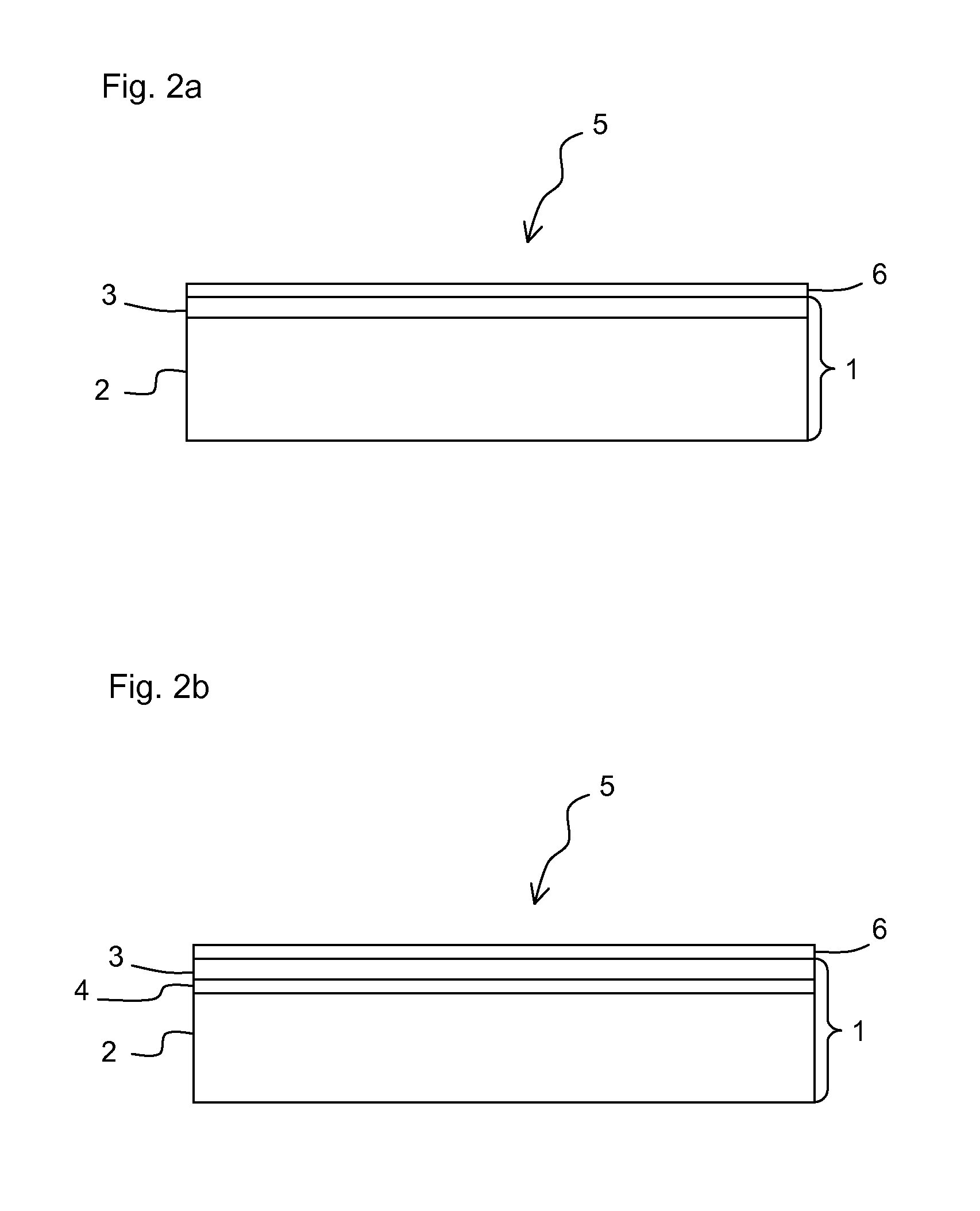Substrate for mirrors for EUV lithography
a mirror and lithography technology, applied in the field of substrates for euv lithography mirrors, can solve the problem of no longer being able to employ lens-like elements in transmission, and achieve the effect of avoiding adverse influences on the increasing the reflectivity of mirrors, and avoiding adverse effects on optical properties of optical elements
- Summary
- Abstract
- Description
- Claims
- Application Information
AI Technical Summary
Benefits of technology
Problems solved by technology
Method used
Image
Examples
Embodiment Construction
[0020]FIG. 1a schematically illustrates a first variant of an embodiment of a substrate 1 comprising a main body 2 and a polishing layer 3 applied thereto. The main body 2 and the polishing layer 3 perform different functions. While a good dimensional stability is of primary significance for the main body 2, good processability and polishability are primarily of importance in the case of the polishing layer 3.
[0021]The polishing layer can be applied using customary vacuum coating methods such as, for example, sputtering methods, electron beam evaporation, molecular beam epitaxy or ion beam assisted coating. If the polishing layer is a metallic material, for example copper, nickel-phosphorus or nickel-boron, it is preferably applied in an externally electroless way. In particular nickel-phosphorus or nickel-boron polishing layers can also be applied as dispersion layers, wherein polytetrafluoroethylene, for example, can serve as dispersant.
[0022]In particular nickel-phosphorus or nic...
PUM
| Property | Measurement | Unit |
|---|---|---|
| root-mean-square roughness | aaaaa | aaaaa |
| root-mean-square roughness | aaaaa | aaaaa |
| root-mean-square roughness | aaaaa | aaaaa |
Abstract
Description
Claims
Application Information
 Login to View More
Login to View More - R&D
- Intellectual Property
- Life Sciences
- Materials
- Tech Scout
- Unparalleled Data Quality
- Higher Quality Content
- 60% Fewer Hallucinations
Browse by: Latest US Patents, China's latest patents, Technical Efficacy Thesaurus, Application Domain, Technology Topic, Popular Technical Reports.
© 2025 PatSnap. All rights reserved.Legal|Privacy policy|Modern Slavery Act Transparency Statement|Sitemap|About US| Contact US: help@patsnap.com



